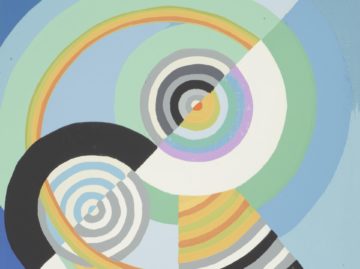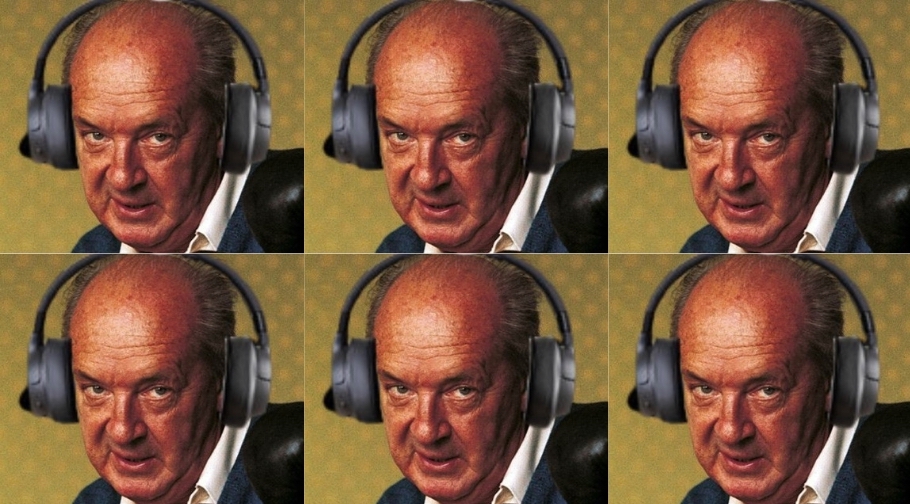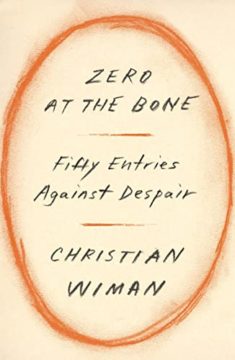Category: Recommended Reading
When Philosophy No Longer Smells of the Earth
George Yancy in the Los Angeles Review of Books:
 WHEN I DISCOVERED the field of philosophy at roughly the age of 17, I was seduced by its abstraction from—or its abstraction away from, as the late philosopher Charles W. Mills would put it—the world of nonideal theory; of harmful immigration policy; of pain and suffering; of racism, anti-Blackness, sexism, femicide, classism, genocide, oppression, poverty, xenophobia, transphobia, white domination, ableist normativity. I’m sure that this is partly why I fell in love with Plato, especially his theory of Forms, which holds that ordinary physical objects are mere appearances—images, shadows—that don’t provide us with true knowledge but with opinion only. It was the immutability of the Forms that transfixed my attention, not the contingent suffering of Plato’s teacher, Socrates, condemned to death by drinking hemlock for being a gadfly. The implication was that, as a philosopher, I had to transcend the messiness of empirical reality, had to stay focused on and seek out capital-R Reality through conceptual abstraction.
WHEN I DISCOVERED the field of philosophy at roughly the age of 17, I was seduced by its abstraction from—or its abstraction away from, as the late philosopher Charles W. Mills would put it—the world of nonideal theory; of harmful immigration policy; of pain and suffering; of racism, anti-Blackness, sexism, femicide, classism, genocide, oppression, poverty, xenophobia, transphobia, white domination, ableist normativity. I’m sure that this is partly why I fell in love with Plato, especially his theory of Forms, which holds that ordinary physical objects are mere appearances—images, shadows—that don’t provide us with true knowledge but with opinion only. It was the immutability of the Forms that transfixed my attention, not the contingent suffering of Plato’s teacher, Socrates, condemned to death by drinking hemlock for being a gadfly. The implication was that, as a philosopher, I had to transcend the messiness of empirical reality, had to stay focused on and seek out capital-R Reality through conceptual abstraction.
This assumption was indicative of mainstream philosophy as I learned it as an undergraduate philosophy major in the early 1980s. My philosophy professors, for the most part, were mainly engaged in what felt like disembodied abstraction and conceptual minutiae.
More here.
An AI Tool Just Revealed Almost 200 New Systems for CRISPR Gene Editing
Shelly Fan in Singularity Hub:
 CRISPR has a problem: an embarrassment of riches.
CRISPR has a problem: an embarrassment of riches.
Ever since the gene editing system rocketed to fame, scientists have been looking for variants with better precision and accuracy. One search method screens for genes related to CRISPR-Cas9 in the DNA of bacteria and other creatures. Another artificially evolves CRISPR components in the lab to give them better therapeutic properties—like greater stability, safety, and efficiency inside the human body. This data is stored in databases containing billions of genetic sequences. While there may be exotic CRISPR systems hidden in these libraries, there are simply too many entries to search. This month, a team at MIT and Harvard led by CRISPR pioneer Dr. Feng Zhang took inspiration from an existing big-data approach and used AI to narrow the sea of genetic sequences to a handful that are similar to known CRISPR systems.
The AI scoured open-source databases with genomes from uncommon bacteria—including those found in breweries, coal mines, chilly Antarctic shores, and (no kidding) dog saliva. In just a few weeks, the algorithm pinpointed thousands of potential new biological “parts” that could make up 188 new CRISPR-based systems—including some that are exceedingly rare. Several of the new candidates stood out. For example, some could more precisely lock onto the target gene for editing with fewer side effects. Other variations aren’t directly usable but could provide insight into how some existing CRISPR systems work—for example, those targeting RNA, the “messenger” molecule directing cells to build proteins from DNA.
More here.
2023 Person of the year: Taylor Swift
Sam Lansky in Time Magazine:
 Taylor Swift is telling me a story, and when Taylor Swift tells you a story, you listen, because you know it’s going to be good—not only because she’s had an extraordinary life, but because she’s an extraordinary storyteller. This one is about a time she got her heart broken, although not in the way you might expect.
Taylor Swift is telling me a story, and when Taylor Swift tells you a story, you listen, because you know it’s going to be good—not only because she’s had an extraordinary life, but because she’s an extraordinary storyteller. This one is about a time she got her heart broken, although not in the way you might expect.
She was 17, she says, and she had booked the biggest opportunity of her life so far—a highly coveted slot opening for country superstar Kenny Chesney on tour. “This was going to change my career,” she remembers. “I was so excited.” But a couple weeks later, Swift arrived home to find her mother Andrea sitting on the front steps of their house. “She was weeping,” Swift says. “Her head was in her hands as if there had been a family emergency.” Through sobs, Andrea told her daughter that Chesney’s tour had been sponsored by a beer company. Taylor was too young to join. “I was devastated,” Swift says.
More here.
Wednesday, December 6, 2023
Wednesday Poem
Ice Storm
For the hemlocks and broad-leafed evergreens
a beautiful and precarious state of being . . .
Here in the suburbs of New Haven
nature, unrestrained, lops the weaker limbs
of shrubs and trees with a sense of aesthetics
that is practical and sinister . . .
I am a guest in this house.
On the bedside table Good Housekeeping, and
A Nietzsche Reader . . . The others are still asleep.
The most painful longing comes over me.
A longing not of the body . . .
It could be for beauty—
I mean what Keats was panting after,
for which I love and honor him;
it could be for the promises of God;
or for oblivion, nada; or some condition even more
extreme, which I intuit, but can’t quite name.
by Jane Kenyon
from Jane Kenyon Collected Poems
Graywolf Press, 2005
Who Doesn’t Like Music? Nabokov, For Starters
Michel Faber at Literary Hub:
 In his memoir Speak, Memory, Vladimir Nabokov reflected: “Music, I regret to say, affects me merely as an arbitrary succession of more or less irritating sounds.”
In his memoir Speak, Memory, Vladimir Nabokov reflected: “Music, I regret to say, affects me merely as an arbitrary succession of more or less irritating sounds.”
The furor over Lolita may have died down, but this confession still has the power to shock. Did the man just say he doesn’t like music? That’s not a matter of preference, such as not caring for sports or pets; it’s a pathological condition.
Accordingly, it’s been given one of those Greek-derived diagnostic labels that allow us to imagine we’ve established a scientific truth rather than merely invented a term: “musical anhedonia.”
And it gets worse: you might have “congenital amusia” (no laughing matter). That’s when, “despite the universality of music,” you find yourself in that “minority of individuals” who, according to The Oxford Handbook of Music and the Brain, “present with very specific musical deficits that cannot be attributed to a general auditory dysfunction, intellectual disability, or a lack of musical exposure.”†
In other words, there are people who don’t get on with music even though they’re not deaf, stupid or ignorant.
More here.
The Military’s Big Bet on Artificial Intelligence
Sarah Scoles in Undark:
 Despite worries about the ethics and safety of AI, the military is betting big on artificial intelligence. The U.S. Department of Defense has requested $1.8 billion for AI and machine learning in 2024, on top of $1.4 billion for a specific initiative that will use AI to link vehicles, sensors, and people scattered across the world. “The U.S. has stated a very active interest in integrating AI across all warfighting functions,” said Benjamin Boudreaux, a policy researcher at the RAND Corporation and co-author of a report called “Military Applications of Artificial Intelligence: Ethical Concerns in an Uncertain World.”
Despite worries about the ethics and safety of AI, the military is betting big on artificial intelligence. The U.S. Department of Defense has requested $1.8 billion for AI and machine learning in 2024, on top of $1.4 billion for a specific initiative that will use AI to link vehicles, sensors, and people scattered across the world. “The U.S. has stated a very active interest in integrating AI across all warfighting functions,” said Benjamin Boudreaux, a policy researcher at the RAND Corporation and co-author of a report called “Military Applications of Artificial Intelligence: Ethical Concerns in an Uncertain World.”
Indeed, the military is so eager for new technology that “the landscape is a sort of land grab right now for what types of projects should be funded,” Sean Smith, chief engineer at BlueHalo, a defense contractor that sells AI and autonomous systems, wrote in an email to Undark. Other countries, including China, are also investing heavily in military artificial intelligence.
More here.
Mosab Abu Toha’s “Gaza Notebook (2021–2023)”
Mosab Abu Toha in the Los Angeles Review of Books:
In 5th grade, I visit the school library.
On one wall next to the door, a poster claims
“If you read books, you live more than one life.”
Now I’m thirty and whenever I look at faces
around me, old or young, on the foreheads I read:
If you live in Gaza, you die several times.
More here.
Leonard Mlodinow: Is Consciousness Ultimate Reality?
Adderall Is America’s New Legal Drug Of Choice
Charles Fain Lehman at The New Atlantis:
 Americans can’t find enough Adderall. In 2021 pharmacists filled over forty million prescriptions for the popular ADHD drug, a sixteen percent increase in just two years. But this explosion in demand, likely driven by lax telehealth prescriptions during the pandemic, has run up against available supply. Because Adderall is a controlled substance, its production is carefully limited by the Drug Enforcement Agency. Some patients now ration their pills or drive hours to fill their prescriptions. People who have taken Adderall daily since they were children find themselves struggling to operate without it.
Americans can’t find enough Adderall. In 2021 pharmacists filled over forty million prescriptions for the popular ADHD drug, a sixteen percent increase in just two years. But this explosion in demand, likely driven by lax telehealth prescriptions during the pandemic, has run up against available supply. Because Adderall is a controlled substance, its production is carefully limited by the Drug Enforcement Agency. Some patients now ration their pills or drive hours to fill their prescriptions. People who have taken Adderall daily since they were children find themselves struggling to operate without it.
Americans find it only too easy, by contrast, to obtain methamphetamine. Of the 109,000 American drug overdose deaths last year, a third were caused by psychostimulants, mainly meth. That’s a more than tenfold increase in a decade, making methamphetamine second only to synthetic opioids, principally fentanyl, in driving the overdose crisis.
more here.
How the Poet Christian Wiman Keeps His Faith
Casey Cep at The New Yorker:
 Although Wiman is among the most distinguished Christian writers of his generation, he is uncomfortable with the word “miracle.” But he doesn’t have an alternative description for what happened last Easter or after any of the other treatments that have kept him alive for the past nineteen years. In his new book, “Zero at the Bone,” he writes, “I had—have—cancer. I have been living with it—dying with it—for so long now that it bores me, or baffles me, or drives me into the furthest crannies of literature and theology in search of something that will both speak and spare my own pain. Were it not for my daughters I think by this point I would be at peace with any outcome, which is, I have come to believe, one reason—the least reason, but still—why they are here.”
Although Wiman is among the most distinguished Christian writers of his generation, he is uncomfortable with the word “miracle.” But he doesn’t have an alternative description for what happened last Easter or after any of the other treatments that have kept him alive for the past nineteen years. In his new book, “Zero at the Bone,” he writes, “I had—have—cancer. I have been living with it—dying with it—for so long now that it bores me, or baffles me, or drives me into the furthest crannies of literature and theology in search of something that will both speak and spare my own pain. Were it not for my daughters I think by this point I would be at peace with any outcome, which is, I have come to believe, one reason—the least reason, but still—why they are here.”
“Zero at the Bone” takes its title from Emily Dickinson, but its subtitle is a surprising salvo for a poet: “Fifty Entries Against Despair.” The book has fifty short chapters, plus two naughts—one at the start and another at the end, each labelled “Zero”—for a total of fifty-two, like the weeks in a year or the playing cards in a deck.
more here.
100 Poems With Christian Wiman
Brain implants help people to recover after severe head injury
Miryam Naddaf in Nature:
 The technique known as deep brain stimulation (DBS) has improved cognition in people with traumatic brain injuries, a small clinical trial has found.
The technique known as deep brain stimulation (DBS) has improved cognition in people with traumatic brain injuries, a small clinical trial has found.
The trial data, published in Nature Medicine on 4 December1, show that the five participants had a 15–52% improvement in their processing speed in a cognitive test after three months compared to their performance before the DBS implants.
“For some participants, the improvements have been transformative, even many years after the injury,” says study co-author Jaimie Henderson, a neurosurgeon at Stanford University in California. Medium to severe traumatic brain injury (msTBI), often a result of wounds or trauma to the head, causes neurons to die and brain circuits to disconnect, leading to long-term cognitive difficulties. People who have this type of injury — of which there are more than 5 million in the United States — often cannot resume their pre-injury life and work.
More here.
Marie Darrieussecq Plumbs the Depths of ‘Sleepless’ Nights
Marek Makowski in The Millions:
 I will never forget the first time I saw the devil—leering at me, lurking in the corner of the room, glowing red and approaching my motionless body. I was caught between sleep and waking; I blinked furiously; I struggled to rouse my heavy limbs as he raised his hand to my face. I could not even muster the strength to open my mouth and cry out, help, mommy, help, the monster will get me—
I will never forget the first time I saw the devil—leering at me, lurking in the corner of the room, glowing red and approaching my motionless body. I was caught between sleep and waking; I blinked furiously; I struggled to rouse my heavy limbs as he raised his hand to my face. I could not even muster the strength to open my mouth and cry out, help, mommy, help, the monster will get me—
In the weeks that followed this first encounter, I discovered an online community of survivors who documented their experiences with sleep monsters and demons. I remembered it as one of those rare, significant encounters in the region of the mind where reality and fantasy, literature, dreams, and the occult coexist, but the commenters taught me that doctors had a term for our episodes (sleep paralysis) and a hypothesis that the monsters at night were hallucinations caused by irregular sleep and lack of sleep. Maybe sleep, I thought sadly, had been classified and pasteurized like all the other great human mysteries. I had not escaped the grasp of the antichrist; I had bad dreams.
I could not stop myself from constructing a story of my life through sleepless nights as I read Sleepless, Marie Darrieussecq’s strange, beautiful meditation on the horror and valor of insomnia. “This book is the result of twenty years of panic” that began with motherhood, writes Darrieussecq. “As my children learned to sleep, I unlearned.” Across 255 pages she attempts to learn again, consulting with physicians, downing barbiturates, and dwelling on the vast literature of sleep and sleeplessness.
More here.
Tuesday, December 5, 2023
A Pimp With A Heart Of Gold
Liam Sherwin-Murray at The Paris Review:
 Based on Paul Theroux’s novel of the same name, the film is the director Peter Bogdanovich’s Vietnam movie as well as his Casablanca, a wartime melodrama about a raffish American trying to make a buck on the periphery of the conflict. A lot happens to Jack Flowers—he falls in love, finds a kindred spirit (platonic), fulfills his dream of running a brothel, runs afoul of local gangsters, goes into business with the U.S. military, witnesses the death of a friend, and gets roped in to a smear operation by the CIA—but the film’s tone and pacing belie its density of event. Saint Jack is laid-back, even chill. Applied to heavy material, this attitude usually produces a comedy, but Saint Jack, while full of funny moments, achieves something serious: the sublime.
Based on Paul Theroux’s novel of the same name, the film is the director Peter Bogdanovich’s Vietnam movie as well as his Casablanca, a wartime melodrama about a raffish American trying to make a buck on the periphery of the conflict. A lot happens to Jack Flowers—he falls in love, finds a kindred spirit (platonic), fulfills his dream of running a brothel, runs afoul of local gangsters, goes into business with the U.S. military, witnesses the death of a friend, and gets roped in to a smear operation by the CIA—but the film’s tone and pacing belie its density of event. Saint Jack is laid-back, even chill. Applied to heavy material, this attitude usually produces a comedy, but Saint Jack, while full of funny moments, achieves something serious: the sublime.
Retrospectives of Bogdanovich’s career tend to describe it as his “loosest” film, a departure to the now for the director, whose interest in the visual style and genre tropes of Hollywood’s studio era, as opposed to those of the French New Wave, had distinguished him from his New Hollywood contemporaries.
more here.
Peter Bogdanovich interviews Orson Welles: 1969-1972
Humanise: A Maker’s Guide To Building Our World
Will Wiles at Literary Review:
 In 1989, when Thomas Heatherwick was eighteen years old, he picked up a Taschen book about the Catalan architect Antoni Gaudí in a student book sale. Inside it, he saw a double-page spread showing Gaudí’s Casa Milà, an apartment building in central Barcelona. ‘I was stunned,’ he writes in the introduction to Humanise. ‘I had no idea that buildings like this existed. I had no idea that such buildings could exist.’
In 1989, when Thomas Heatherwick was eighteen years old, he picked up a Taschen book about the Catalan architect Antoni Gaudí in a student book sale. Inside it, he saw a double-page spread showing Gaudí’s Casa Milà, an apartment building in central Barcelona. ‘I was stunned,’ he writes in the introduction to Humanise. ‘I had no idea that buildings like this existed. I had no idea that such buildings could exist.’
The picture had a transformative effect on the young Heatherwick, who was already eyeing a career in design. He has since become a prolific and original maker of buildings and other architectural spectacles. His studio has chalked up some very significant successes, such as the delicately beautiful UK pavilion at the 2010 Shanghai Expo, the cauldron for the Olympic flame at the 2012 London Games and Zeitz MOCAA in Cape Town, a remarkable gallery for contemporary African art carved out of a concrete grain silo, which opened in 2017.
more here.
The Anti-Poetry of John Milton
David K. Anderson in The Hedgehog Review:
 Great critics enjoy magisterial prerogatives, and one of them is the right of comparing John Milton to William Shakespeare. When Samuel Taylor Coleridge took his turn, he was wise enough to refrain from making the two contenders for the title of England’s greatest poet. They are simply too different, he avers. Milton is Shakespeare’s “compeer, not his rival.” Shakespeare, Coleridge explains, “passes into all the forms of human character and passion,” while Milton, “attracts all forms and things to himself, into the unity of his own ideal. All things and modes of action shape themselves anew in the being of Milton; while Shakespeare becomes all things, yet forever remaining himself.” For Coleridge the authorial personality of the one is perfused throughout his work until no stable, freestanding sense of “Shakespeare” remains; the work of the other, line by exacting line, demands to be read in light of the man himself. Not even Dante, who cast himself as the protagonist of his own great poems, or Tolstoy, who pauses a narrative to interject whole philosophical essays, press themselves on the reader as forcefully as does Milton.
Great critics enjoy magisterial prerogatives, and one of them is the right of comparing John Milton to William Shakespeare. When Samuel Taylor Coleridge took his turn, he was wise enough to refrain from making the two contenders for the title of England’s greatest poet. They are simply too different, he avers. Milton is Shakespeare’s “compeer, not his rival.” Shakespeare, Coleridge explains, “passes into all the forms of human character and passion,” while Milton, “attracts all forms and things to himself, into the unity of his own ideal. All things and modes of action shape themselves anew in the being of Milton; while Shakespeare becomes all things, yet forever remaining himself.” For Coleridge the authorial personality of the one is perfused throughout his work until no stable, freestanding sense of “Shakespeare” remains; the work of the other, line by exacting line, demands to be read in light of the man himself. Not even Dante, who cast himself as the protagonist of his own great poems, or Tolstoy, who pauses a narrative to interject whole philosophical essays, press themselves on the reader as forcefully as does Milton.
More here.
A People’s Obituary of Henry Kissinger
Greg Grandin at The Nation:
 Earlier, during more critical times, he had been accused of many bad things. Now that he’s gone, his critics will get a chance to rehearse the charges. Christopher Hitchens, who made the case that the former secretary of state should be tried as a war criminal, is himself dead. But there’s a long list of witnesses for the prosecution: reporters, historians, and lawyers eager to provide background on any of Kissinger’s actions in Cambodia, Laos, Vietnam, East Timor, Bangladesh, against the Kurds, in Chile, Argentina, Uruguay, and Cyprus, among other places.
Earlier, during more critical times, he had been accused of many bad things. Now that he’s gone, his critics will get a chance to rehearse the charges. Christopher Hitchens, who made the case that the former secretary of state should be tried as a war criminal, is himself dead. But there’s a long list of witnesses for the prosecution: reporters, historians, and lawyers eager to provide background on any of Kissinger’s actions in Cambodia, Laos, Vietnam, East Timor, Bangladesh, against the Kurds, in Chile, Argentina, Uruguay, and Cyprus, among other places.
There have been scores of books published on the man over the years, but it is still Seymour Hersh’s 1983 The Price of Power that future biographers will have to top. Hersh gave us the defining portrait of Kissinger as a preening paranoid, tacking between ruthlessness and sycophancy to advance his career.
More here.
Tuesday Poem
Song of Grassblade
and greenhouse and topsoil and basil greens
and cowshit and snowfall and spinach knife
and woodsmoke and watering can and common thistle
and potato digger and peach trees
and poison parsnip and romaine hearts
and rockpiles and spring trilliums and ramp circles
what song of grassblade
what creak of dark rustle tree
and blueblack wind from the north
this vetch this grapevine
this waterhose this mosspatch
sunflower gardens in the lowland
dog graves between the apple trees
this fistfull of onion tops
this garlic laid silent in the barn
this green this green this green
sweet cucumber leaf
sweet yellow bean
and all this I try to make a human shape
the darkness regenerating a shadow of a limb
my tongue embraces the snap pea
and so it is sweet
how does the rusted golfcart in the chickweed
inform my daily breath
I’m sorry I want to say
to the unhearing spaces
between the dogwood trees
for my tiny little life
I have pressed into
your bruising green skin
by Lucy Walker
from Pank Magazine, Spring 2023
